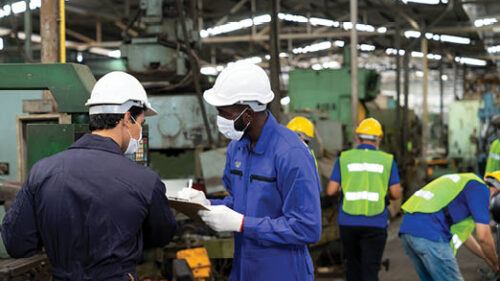I have the pleasure of working with many businesses and hearing from them about their unique challenges and opportunities. It’s likely no surprise to you that the “workforce” continues to be a challenge for businesses. How to attract talent and retain talent in the workplace is impacting all businesses, regardless of industry.
The number of new employees entering a business’s workforce, along with newer-to-role employees, creates challenges when considering how to get them trained, to include on your safety programs. But, it’s not just new employees. Understanding your businesses safety culture, regardless of an employee’s tenure, is crucial.
So, what can you do to not only teach new employees about your safety culture but also ensure your seasoned employees understand it to drive safety culture performance? I have a few ideas.
Leadership-Backed Safety Programs
I find the best companies are ones who have their leadership team owning the safety program. What I mean is that these companies have leaders who don’t just talk about productivity, but they talk about how they take care of their employees and how their employees get home safely every night. Safety is utmost priority.
Safety is part of the organization’s culture, and safety reminders and training are done through the hiring and onboarding processes.
Positive Reinforcement Encourages Employees
We have all heard about the carrot or the stick approach. As a kid, I’ll be honest, I loved the carrot approach. What is best and what gets the best results?
It’s interesting to note, especially during a challenging labor market, that using positive reinforcement increases employee satisfaction. It’s important for businesses to thank their employees, and make sure employees know they are making a difference.
What happens when a safety practice didn’t go as planned? Don’t stay silent. Communicate it with employees and create an environment that is a safe space where learning is fostered. It’s even more impactful if the employee can participate and share their story on what happened and how to avoid it in the future.
Employee Commitment to Safety Culture
Just like how it’s important for leaders to be active in your safety program, it’s also incredibly important for your employees to be committed and motivated to play an active role in the safety programs.
Employees should feel comfortable to “see something, say something” when a safety practice isn’t being followed or could be better. Employees should have multiple ways they are able to provide feedback on your organizations’ safety program.
Leaders can’t be “boots on the ground” all the time, but your employees are. How often are you reaching out and encouraging employee feedback? If someone gives you feedback to make reasonable and necessary changes, do you? Do you report back to the employee on progress or the decision?
No doubt it’s a challenging time find and attract talent. Providing a safety culture is a game changer for an organization. Do you agree? I’d love to hear from you on other ideas and suggestions of how to foster that game changing safety culture! Reach out and let me know!







